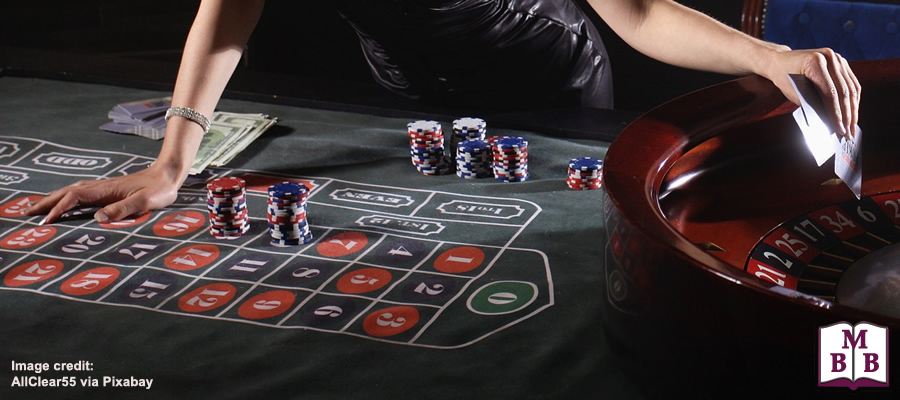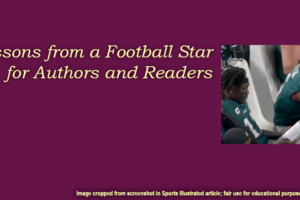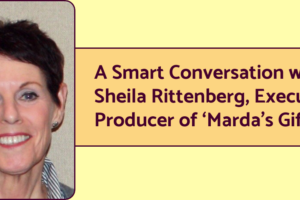This edition of Marginalia focuses on The Scout Mindset: Why Some People See Things Clearly and Others Don’t, by Julia Galef. As the subtitle suggests, it’s about adopting strategies to help us see the world as it is, rather than allowing the biases built into our brains to accept only what fits into the comfortable narrative we’ve constructed.
I hope you’ll agree that’s an important skillset in today’s culture of division, “alternate” facts, and information overload. But I was struck by how many of the tools she provides apply to authors and the way we construct books.
We’re all soldiers and scouts
Galef starts by introducing her two archetypes, soldiers and scouts. Soldiers deploy reasoning to defend the turf they’ve taken as theirs.
When the daily barrage of new information comes to the gate, they look for friends and foes. When they want a “friend” item to be true, they analyze it by asking, “Can I believe this?” and look for an excuse to let it come in.
With “foe” items they don’t want to accept, they ask, “Must I believe this?” and find reasons to turn it away.
Scouts have a different job. They’re supposed to look at the landscape and prepare reliable maps and deliver accurate intelligence about the world around them, so that decisions can be based on the true state of affairs.
For example, would there even have been a Last Stand, if Custer had received (and believed) accurate scouting reports on the number and locations of Sioux and Cheyenne warriors waiting for him?
His official reports had told him there were about 800 warriors and his experience said some would be guarding their encampment by the river. History estimates there were from 1,500 to as many as 3,000 warriors, against the roughly 210 soldiers he commanded that day and a total of around 700 soldiers in the entire 7th Cavalry spread out for miles in the vicinity.
It’s never been clear whether Custer received reports from his scouts of larger numbers of warriors (must I believe them?), or if he simply chose to rely on the official number of “hostiles” he’d been given earlier (can I believe them?).
Instead of asking can/must I believe this, the scout mindset asks, “Is it true?”
Obviously, in Custer’s situation, he’d have been better off finding a way to verify that what Galef calls his “map of reality” was true before ordering his small unit to attack.
Before you try to peg yourself and others as soldiers or scouts, Galef reminds that all of us are both. Which mindset we use depends on context. She offers these examples:
“A [stock] trader might be especially scoutlike at work, happy to test their own assumptions and discover they were wrong about the market … and then come home and be a soldier in their personal life, unwilling to acknowledge problems in their marriage or consider the possibility that they might be wrong. An entrepreneur could be in scout mindset while talking to a friend, wondering aloud whether her current plan is a mistake … and then shift into soldier mindset the next day at the office, defending her plan reflexively when her co-founder criticizes it.”
Though we’re all a mix of scout and soldier, she argues that some
“are better scouts than most … more genuinely desirous of truth … less willing to accept bad arguments that happen to be convenient … more conscious that their map of reality could be wrong, and more open to changing their mind.”
Her book, she writes,
“is about what those people are doing right, and what we can learn from them to help us move from soldier to scout ourselves.”
This post is about why her lessons are vitally important to authors.
What authors bet on
Unlike Custer, we authors aren’t betting our lives and those around us on the accuracy of our maps of reality when we write a book. But we are betting something pretty important: our credibility — with our readers, critics, and the publishing world.
If you’re writing a nonfiction book, the content should be, well, not fictional.
That means you’ve got to do the research and test the validity of the evidence you use to support your message. Galef uses an example from her own writing of The Scout Mindset to illustrate one of her tests for uncovering our biases, called “The Selective Skeptic Test.”
“During my research for this book, I came across a paper claiming to show that soldier mindset makes people successful in life. ‘Oh, come on,’ I scoffed to myself, and checked its methodology section for flaws. Sure enough, it turned out to be a poorly designed study.
“Then, somewhat grudgingly, I did a thought experiment: What if this study had claimed that soldier mindset makes people unsuccessful in life?
“In that case, I realized, my reaction would have been: ‘Exactly as I suspected. I’ll have to find a place for this study in my book!’ That … was a wake-up call for me … to go back through the studies I had been planning to cite in my favor, and scrutinize their methodology … (Sadly, this ended up disqualifying most of them.)”
Now, Galef supplies 21 pages of notes to back up her theses about the value and practice of a scout mindset. So her credibility is only enhanced by knowing that she rejected evidence with weak study methods on both sides.
Fiction authors face the same credibility concerns. The worlds they set their stories in must be filled with characters, locations, and props that readers can accept as real, no matter how fantastical the genre. Science fiction doesn’t work if the science parts are just plain wrong. Murder mysteries fall apart if the poison doesn’t work the way depicted, or the psychosis would prevent the character from acting as described.
Serious fiction writers do research, too. And they understand they’ll get called out by astute readers for mistakes, as I covered in a recent newsletter, “Are you okay saying OOOPS! to your audience?” Using John Sanford’s bravery in an Author’s Notes section of his book, Ocean Prey, as my example, I noted several errors he’d had pointed out to him, including this one:
“My brother-in-law Dan called me up and told me that in Golden Prey, I’d referred to a 40mm pistol. Should have been .40 caliber. Calibers are hundredths of an inch, millimeters are . . . millimeters. A 40mm pistol would shoot a bullet about an inch and a half across. There is a 40mm round – it’s fired from a grenade launcher, not the kind of weapon that Lucas Davenport would have tucked under his sport coat.”
Sanford’s books have garnered enough audience that a small mistake like this won’t derail his career. But if a book is riddled with them, or based on an entirely false premise, readers will abandon without finishing and the author will likely have a short career.
Don’t bet yours on writing what you “know.” Do your research and make sure you’re asking, “Is it true?”
Place your bets on …
The betting theme comes from how many of Galef’s tests and thought experiments employ that label.
In her section “A bet can reveal how sure you really are,” she shows how we often make statements or decisions in the moment based on assumptions and motivations unrelated to truth. Her example is how we might tell a friend how great we think their new catering business is, but hesitate and stutter when they reply with a request that we recommend their business to our boss for an upcoming event.
What changes in that moment are the stakes. Are we willing to bet our credibility with our boss on our assumption that our friend is competent and our motivation to help? Or do we need more information, a more reliable map of reality?
She notes an analogy to help us do thought experiments when making important decisions, thinking about whether the information available sounds more like what a “press secretary” would say, or what a board of directors would demand to know about the situation, because as she puts it:
“The press secretary makes claims; the board makes bets.”
Similar betting tests and thought experiments in her book include:
- The equivalent bet test
- An accurate picture of your odds helps you choose between goals
- An accurate picture of the odds helps you adapt your plan over time
- An accurate picture of your odds helps you decide how much to stake on success
- Bets worth taking
- Coming to terms with the risk
We’ve only scratched the surface of the varied tests and thinking prompts Galef covers to help us be scouts. But the overall attribute that runs through much of her message is curiosity.
When you encounter something that calls your exising map of reality into question, that should arouse your curiosity prompt you to ask, “Is it true?”
And then, running these types of tests and thought experiments
“breaks down the illusion that your initial judgment is the objective truth. It convinces you, viscerally, that your reasoning is contingent; that your initial judgments are a starting point for exploration, not an end point.”
What better description of a curious mind could she have given?
Maintaining that attitude of all our knowledge and our maps of reality being contingent helps soften or eliminate the blows to our egos from being wrong. All that’s happened is we’ve gained new information and can now update our maps!
She quotes the ancient wisdom of Emmett Shear, co-founder of Justin.tv and Twitch, who told her he used to struggle with finding out he was wrong as a painful experience. Now, at the ripe old age of 40, he says,
“As I’ve gotten older, it’s gotten easier to be wrong. Not even to be wrong. It’s just an update; I learned this new thing … what’s the issue?“
You’ve probably heard the quote attributed to Yogi Bhajan,
“If you want to learn something, read about it. If you want to understand something, write about it. If you want to master something, teach it.”
In writing and publishing a book, you are — or should be — doing all three.
And a scout mindset is essential to doing it well.






1 Comment
Leave your reply.